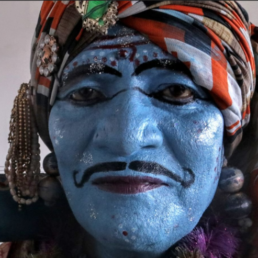At the onset of WWI, approximately 1.3 million Indians fought in every theater of the conflict. But, only one of them lorded the skies over Europe like no other. This is the story of Indralal Roy, the first and the only Indian flying officer in the British Army to have earned the title of an ‘Ace’.
About 8 kms north of Barisal District in Bangladesh, the ‘Lakutia Zamindar Bari’ is a massive, abandoned house that still stands tall with its 400 odd years of history – a sight to behold for the history buffs as well as the spooky fiction lovers.
If you look closer through the pages of history, it will tell you that a legacy of mavericks ran through the veins of the zamindar family of Rajchandra Roy. Between the 17th and 18th century in pre-independent India, the Roy family rose to the height of attention through their philanthropic works.
The path of philanthropy took an unconventional turn through Rajchandra’s grandsons Pareshlal and Indralal.
Pareshlal, the elder one served in the 1st Battalion of Honourable Artillery Company during the WWI, and later went on to become the “father of Indian boxing”. A fascinating life to uncover but for another day.
Indralal, his younger brother, the hero of our story, however, truly defined the word ‘maverick’ through his life. Indralal was born in Calcutta, but his family moved out to London along with his 5 siblings when he was only 3 years old.
When the war broke out, Indralal, only 15 then, was attending St. Paul’s School in Kensington. As he completed his boyhood to legally become a man who had just turned 18, he enlisted with the Royal Flying Corps (RFC).
His journey initially started with a series of unfortunate and dramatic setbacks. First his application was rejected by RFC on the grounds of poor eyesight. It wasn’t until he took a second opinion from a leading eye specialist that his rejection was overturned.
While serving as part of the No. 56 Squadron in France, Indralal crash-landed his S.E.5a fighter and was knocked unconscious due to injuries. Thought to be dead, his body was transferred to the morgue along with other corpses.
When he finally came to his senses, it became an affair of a frightening resurrection in the morgue and the morgue attendant had to call for back-up before he could open the door and let him go. Despite the initial setbacks, Indralal in his thoughts had already become a flying officer.
During his recovery, he continued to draw sketches of aircraft, some of which survived and were displayed at the Indian Air Force Museum in Delhi. Upon his return to active service in June of 1918, he was posted to No. 40 Squadron under flight commander Captain George McElroy.
Over the next few days, the Irish-Indian pair literally lorded the French skyline as part of the newly formed Royal Air Force (RAF). However, the next month, marked the most incredible and tragic sequence of events in Indralal’s life.
Within a span of 2 weeks (July 6-19), he amassed 10 air combat victories including 3 in a single day in under 4 hours, one of which came against a Fokker D.VII – considered one of the best German combat aircraft of the WWI.
Indralal’s scorecard was a testimony of the incredible natural talent that he possessed. To be credited an ‘Ace’, one must destroy 5 or more enemy aircraft – a feat that’s hard to achieve even for the most qualified professionals throughout their career and yet, he achieved it within 2 weeks.
Tragically though, his success was short-lived. Just 3 days after his final victorious combat, he took off for a routine patrol when he was attacked by a herd of Fokker D.VII. Despite a valiant effort, his S.E.5a was shot down.
Indralal was still 4 months short of his 20th birthday when the remains of his body were carried off on shoulders of men, far older than him. Indralal was awarded a posthumous Distinguished Flying Cross for his heroics and buried at the Estevelles Communal Cemetery.
Indralal was affectionately called ‘Laddie’ by his mother which roughly translates to ‘little boy’. The little boy from Calcutta remains to be the only Indian flying ace in the pages of history, an achievement that couldn’t be touched by men from his homeland till date.
Sources:
https://www.firstworldwar.com/bio/roy.htm
Nair, K. S. Remembering Indra Lal Roy, India’s ‘Ace’ Over Flanders. https://thewire.in/history/indra-lal-roy-ace-flanders-india-failed-celebrate
Lrb Travel Team. Lakutia Zamider Bari A Historical Place At Barishal. https://www.lrbtravelteam.com/lakutia-zamider-bari-barishal/
Image attributes:
Indra Lal Roy on a 2019 stamp of India by India Post, Government of India, GODL-India, From Wikimedia Commons
Lakutia Zamindar Bari by ANKAN, CC BY-SA 4.0, From Wikimedia Commons
One of Roy’s drawings, made when he was recuperating from his crash, Credit: Indian Air Force Museum, From https://thewire.in/
Indra Lal Roy’s grave at Estevelles Communal Cemetery, Pas-de-Calais, France by Kwiat59, CC BY-SA 4.0, From Wikimedia Commons




